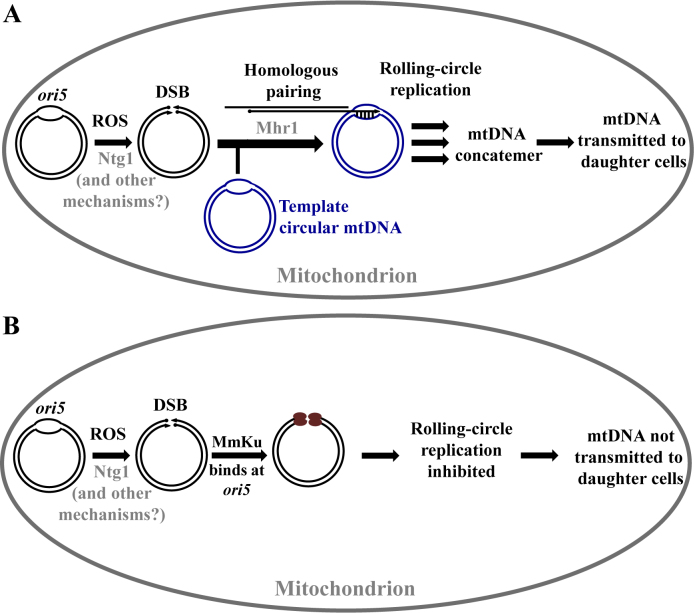Figure 6.
A model explaining the effect of MmKu on S. cerevisiae mtDNA. (A) Under normal physiological conditions, ROS oxidizes yeast mtDNA at ori5. Ntg1 recognizes these modifications and introduces a DSB. Other unidentified mechanisms can also account for DSBs at ori5. A 3΄ single-stranded tail is generated, to which Mhr1 binds. This nucleoprotein filament invades a template circular mtDNA to mediate the initiation of mtDNA RDR. This results in formation of mtDNA concatemers, which are selectively transmitted to daughter cells. Figure 6A is adapted from (19). (B) Yeast cells expressing mitochondrial-targeted MmKu have the Ku protein bound to the DSB at ori5. This inhibits mtDNA RDR, so new mtDNA molecules are not synthesized. As a consequence, mtDNA molecules are not segregated to daughter cells.

